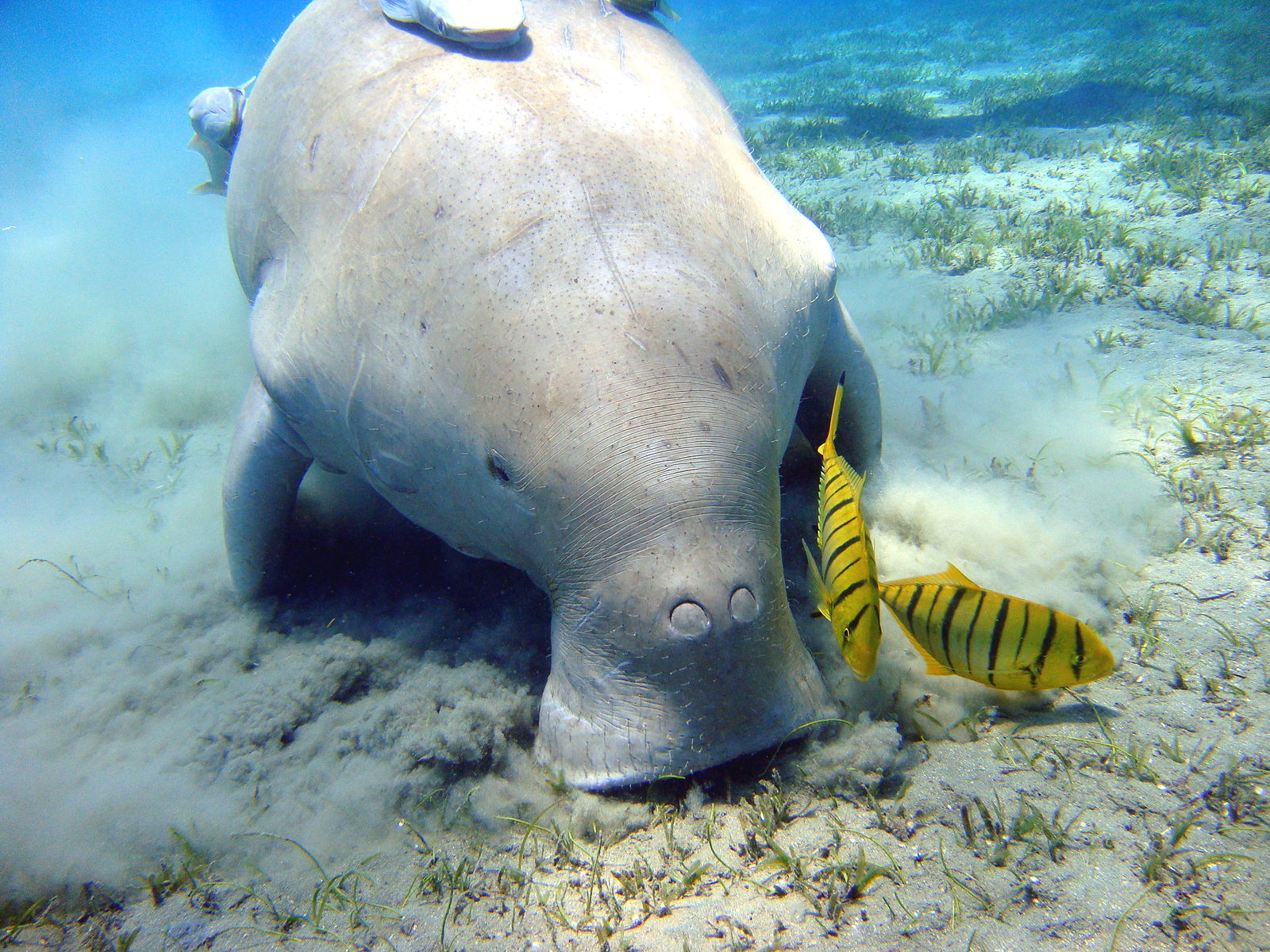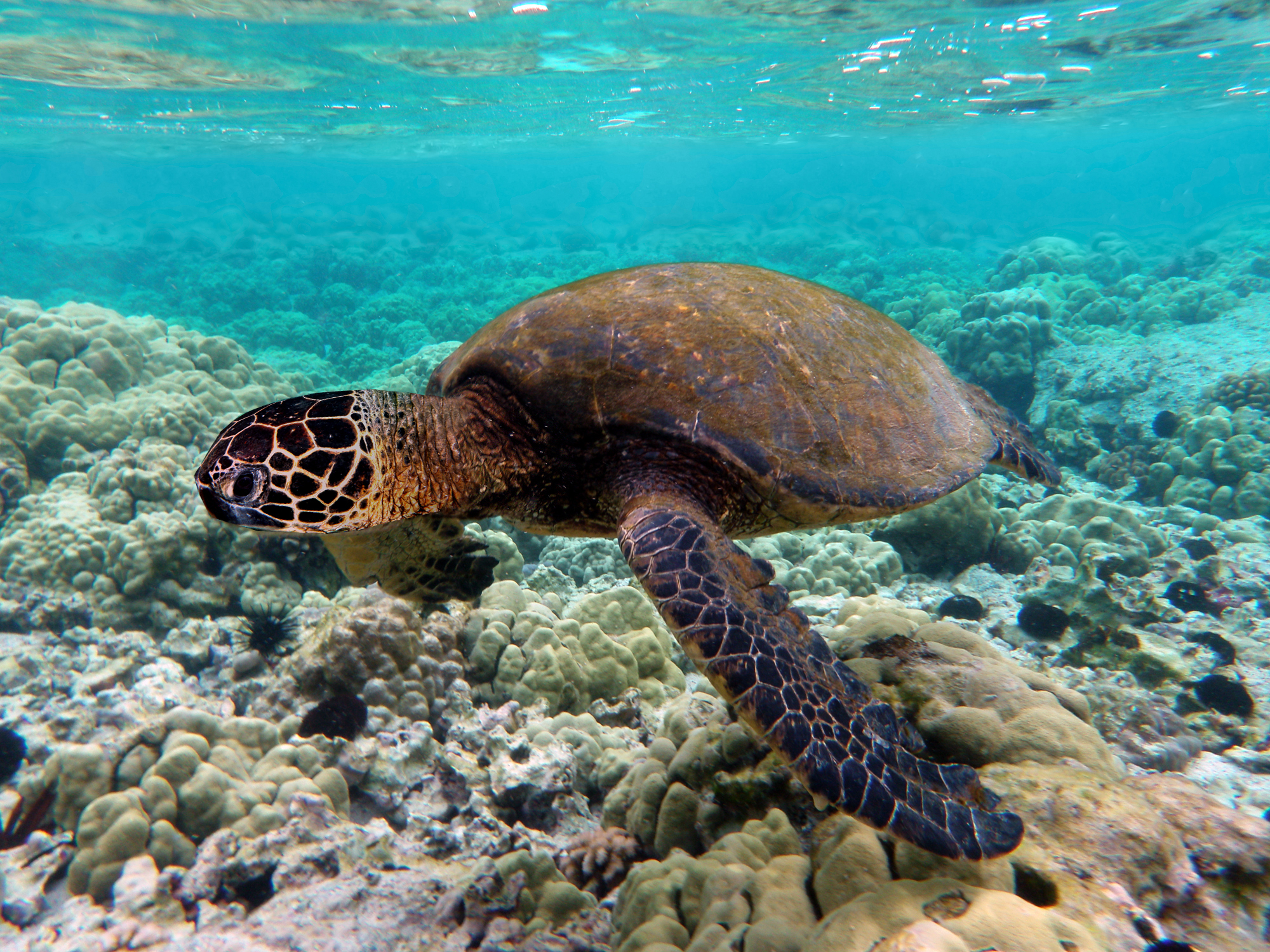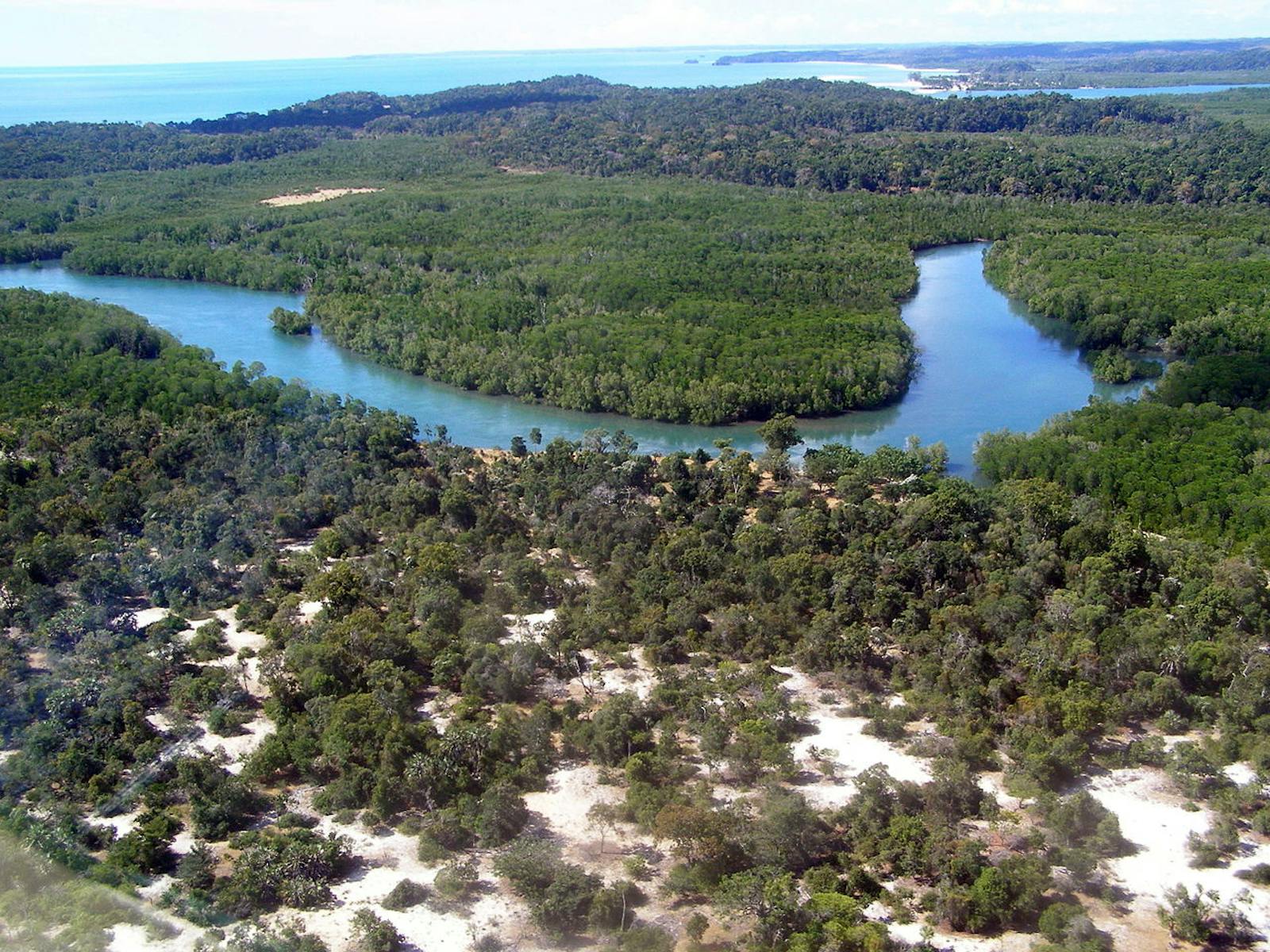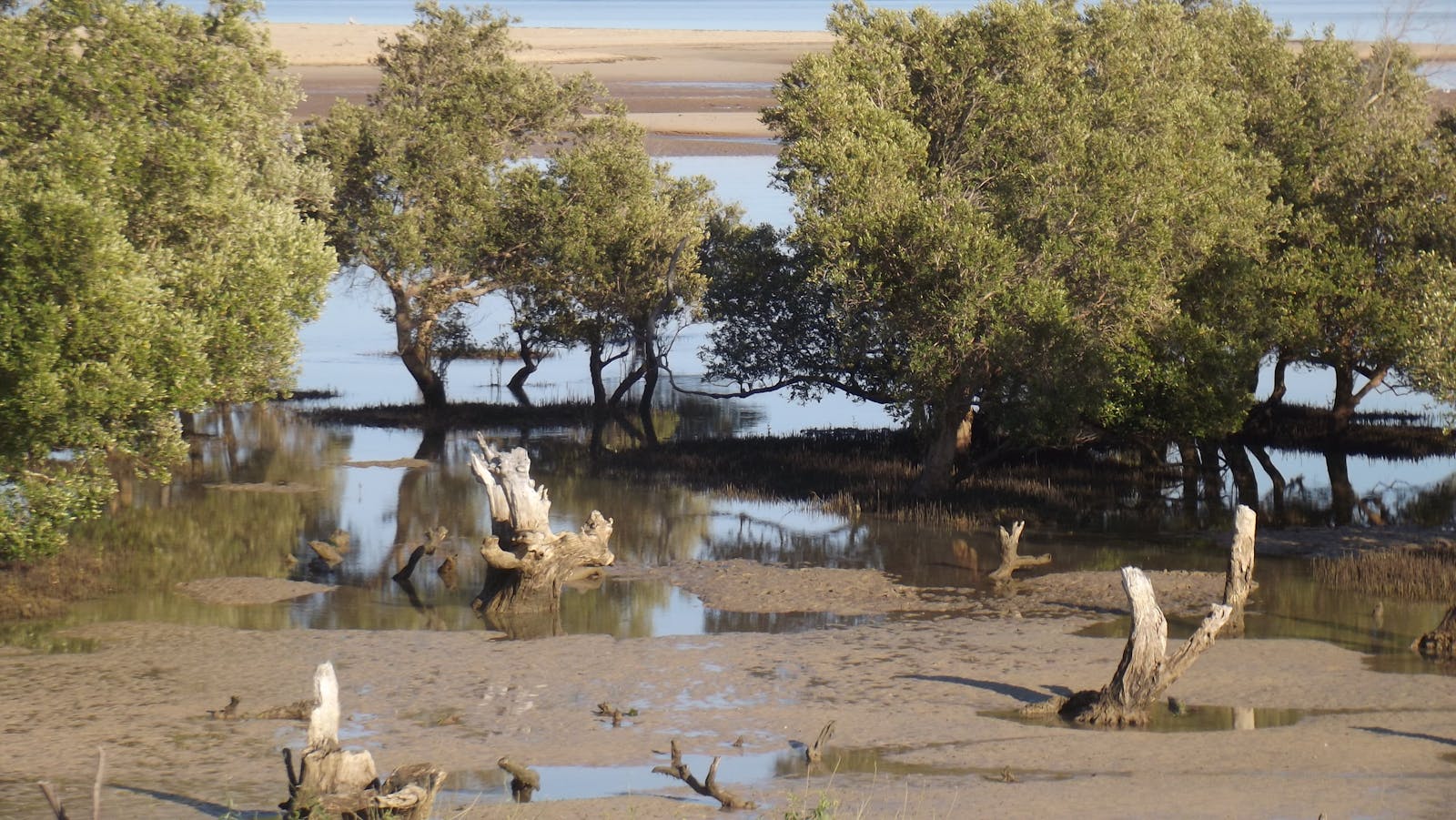Madagascar Mangroves
The ecoregion’s land area is provided in units of 1,000 hectares. The protection goal is the Global Safety Net (GSN1) area for the given ecoregion. The protection level indicates the percentage of the GSN goal that is currently protected on a scale of 0-10.
Bioregion: Madagascar Island (AT6)
Realm: Afrotropics
Ecoregion Size (1000 ha):
522
Ecoregion ID:
114
Conservation Target:
45%
Protection Level:
1
States: Madagascar
Two percent of the world’s mangroves are found in Madagascar, and 20% of these have been deforested for timber, charcoal production, and agricultural expansion. Mangroves are highly important due to their capability of storing large amounts of carbon in their organic matter. They accumulate the most carbon of all tropical forest types. It has also been estimated that mangroves sequester carbon 10–50 times faster than other terrestrial ecosystems, mainly into the mud they live on.

The flagship species of the Madagascar Mangroves ecoregion is the dugong. Image credit: Creative Commons
This ecoregion contains mangrove forests found primarily along the western coast. They occur in a wide range of environmental and climatic conditions, fostered by a low coastal platform, high tidal range, and a constant freshwater supply from numerous rivers that also bring a high silt load which is deposited along the coast. Mangroves occupy a stretch of coastline of approximately 1,000 km in length where they are often associated with coral reefs, which protect the mangroves from ocean swells. The mangroves, in turn, capture river sediments that threaten both reefs and seagrass beds. The southern part of Madagascar has fewer mangroves because, in addition to having a longer dry season and lower rainfall, it is subject to intensive ocean swells and lacks the necessary alluvial sediments deposited by major river systems.
The lack of alluvial sediments is also true on the eastern side of the island, where mangrove stands are small and scattered. Water temperatures are relatively even from north to south, and rainfall varies with climatic zones that range from 2,000 mm in the humid subequatorial north to 350 mm in the dry subtropical south. Madagascar has two seasons: a cool dry season from May through October, and a warm humid season from November through April. Mangroves provide many services including nurseries and spawning grounds for fish and protection from storm surges. Although up to nine mangrove tree species have been recorded, most of the Madagascar mangrove stands contain six species in four families: Rhizophora mucronata, Bruguiera gymmorrhiza, and Ceriops tagal (Rhizophoraceae), Avicennia marina (Avicenniaeceae), Sonneratia abla (Sonneratiaceae), and Lumnitzera racemose (Combretaceae).The primary colonizers are Sonneratia and Avicennia.
-Charles%20J%20Sharp-2016.jpg)
African spoonbill. Image credit: Charles J Sharp, Creative Commons
Several of the Madagascar endemic birds are found in the coastal areas of western Madagascar where they use mangrove and associated wetland habitats. These species are the Madagascar heron, Madagascar teal, Madagascar plover, and Madagascar fish-eagle. The majority of the Madagascar teal population spends most of its life around mangroves, nesting in mangrove tree holes. Mangroves are also important for migratory bird species, such as common ringed plover, crab plover, and African spoonbill. Some sea turtles, primarily green turtle, and hawksbill turtle nest along the western coast and are occasionally found in mangroves. Nile crocodiles are also found in the mangroves, as well as the dugong.
The protected seagrass habitats on the north-western coast of Madagascar remain the hotspot for this vulnerable population of dugong; a population which has recently been found to be genetically distinct from other Western Indian Ocean populations. There is particularly high diversity among the fish populations, the families of which include Mugilidae, Serranidae, Carangidae, Gerridae, Hemiramphidae, and Elopidae. There is also high diversity among mollusks and crustaceans, including crab species of the genera Uca, Scylla, Macrophtalmus, and Sesarma.
Estimates of remaining mangrove areas in Madagascar are 2,433 km2 in 2005 with some of the largest stands occurring around Mahajamba Bay, South Mahavavy and Soalala, Bombetoka, and Besalampy. Mangroves are found along the west coast in the following protected areas: Sahamalaza, Mahavavy Kinkony, Baie de Baly National Park, Lake Kinkony Ramsar site, and the Complexe des lacs Ambondro et sirave Ramsar site.

Green turtle. Image credit: Brocken Inaglory, Creative Commons
There has been an estimated loss in mangroves of 21% between 1990 and 2010 in the ecoregion. Mangroves are threatened by development of urban areas and over-fishing. Frequent tree-cutting and bush fires in the highlands cause soil erosion resulting in much too high sedimentation loads in mangrove ecosystems. Some mangrove areas have been converted to rice farming and salt production. The growth of aquaculture since the 1990s has caused the destruction of mangroves for the construction of the farms and as a result, degradation of spawning areas and a decline in fish stocks.
Direct harvesting of the mangrove trees for fuelwood, charcoal production, and timber harvesting is a large threat, particularly in Mahajanga and Toliara. A growing threat is from climate change leading to an increased frequency of high intensity cyclones with the associated storm surges. Therefore, mangrove conservation is essential to prevent coastal erosion and flooding.
The priority conservation actions for the next decade will be to: 1) promote ecological restoration activities adjacent to aquaculture, agriculture and forestry areas; 2) generate revenue for conservation by harnessing the value of carbon stored in mangroves; and 3) strengthen local community’s technical capacity and promote sustainable farming, aquaculture and forestry techniques and management.
Citations
1. Burgess, N., Hales, J.A., Underwood, E., Dinerstein, E., Olson, D., Itoua, I., Schipper, J., Ricketts, T. and Newman, K. 2004. Terrestrial ecoregions of Africa and Madagascar: a conservation assessment. Island Press.
2. CEPF. 2014. Ecosystem profile: Madagascar and Indian ocean islands. [Online]. [Accessed 20 March 2018]. Available from: https://www.cepf.net/sites/default/files/ecosystemprofile_madagascar_en.pdf
3. Rabarison, H., Randriamahaleo, S.I., Andriambelo, F.M., and Randrianasolo. H.L. 2015. National Biodiversity and Action Plans 2015-2025. Madagascar: Ministry of Environment, Ecology, the Sea and the Forests
4. Benson, L., Glass, L., Jones, T.G., Ravaoarinorotsihoarana, L. and Rakotomahazo, C. 2017. Mangrove carbon stocks and ecosystem cover dynamics in Southwest Madagascar and the implications for local management. Forests. 8(6), p.190.





